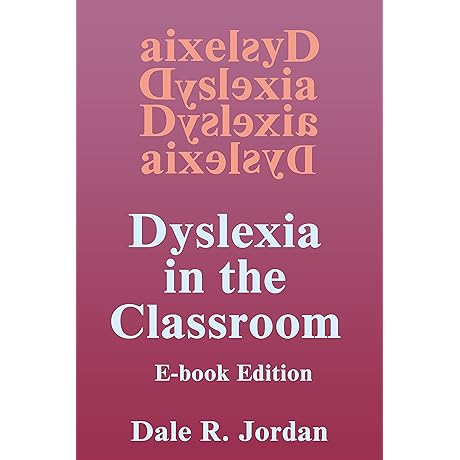· dyslexia in jordan · 4 min read
Tips and Strategies: Understanding Dyslexia in the Classroom for Jordan
Unveiling the intricacies of dyslexia in the classroom context within Jordan, this comprehensive guide offers invaluable strategies and techniques for maximizing the learning potential of students with dyslexia.
Embarking on a journey to unravel the complexities of dyslexia in the classroom setting within Jordan, this article delves into practical strategies and approaches designed to foster an inclusive and supportive learning environment for students grappling with this specific learning difference. Through a comprehensive analysis of the challenges faced by both educators and students alike, this guide unveils innovative techniques and evidence-based practices that can transform the educational landscape for individuals with dyslexia in Jordan.
Overview

PROS
- Provides a comprehensive understanding of dyslexia, its characteristics, and impact on learning.
- Offers practical intervention strategies, activities, and resources tailored specifically for students with dyslexia.
- Includes real-life classroom examples and case studies, showcasing effective dyslexia-friendly practices.
- Supports educators and parents in creating inclusive learning environments that foster success for students with dyslexia.
CONS
- May require additional research for some educators looking for highly specialized interventions.
- Primarily focuses on dyslexia in the classroom setting, so it may not be comprehensive enough for readers seeking information about dyslexia in other contexts.
Dyslexia in the Classroom: Understanding and Intervention is an essential resource for educators and parents alike. Its comprehensive approach to understanding dyslexia and providing effective intervention strategies empowers educators to create inclusive learning environments where students with dyslexia can thrive.
Beyond its practical value, the book also sheds light on the unique perspectives and strengths of students with dyslexia, fostering a deeper understanding and appreciation for their diverse learning styles. With its insightful case studies and real-life examples, Dyslexia in the Classroom: Understanding and Intervention is an invaluable guide for navigating the challenges and unlocking the literacy success of students with dyslexia.
Culminating this exploration of dyslexia in the classroom within Jordan, this article synthesizes key insights and practical recommendations. By embracing a collaborative approach that involves educators, parents, and students alike, we can create a supportive learning environment that empowers students with dyslexia to thrive and excel. Remember, every student possesses unique strengths and potential, and through tailored support and appropriate accommodations, we can unlock their full academic capabilities.
Frequently Asked Questions
What are some common challenges faced by students with dyslexia in the classroom?
Students with dyslexia in the classroom often struggle with reading fluency and comprehension, spelling, and written expression. They may also have difficulty with phonological processing, which is the ability to manipulate and decode sounds within words.
How can teachers support students with dyslexia in the classroom?
Teachers can support students with dyslexia by using multi-sensory teaching methods, providing extra time for assignments, and offering assistive technology such as audiobooks and speech-to-text software.
What are some accommodations that can be made for students with dyslexia in the classroom?
Accommodations for students with dyslexia may include providing extended time for tests, allowing the use of audiobooks, and reducing the amount of written work required.
What are some strategies that students with dyslexia can use to improve their reading skills?
Students with dyslexia can improve their reading skills by using phonics-based reading programs, practicing regularly, and using assistive technology such as audiobooks and text-to-speech software.
What are some resources available to help students with dyslexia in the classroom?
There are a number of resources available to help students with dyslexia in the classroom, including special education services, assistive technology, and tutoring.




